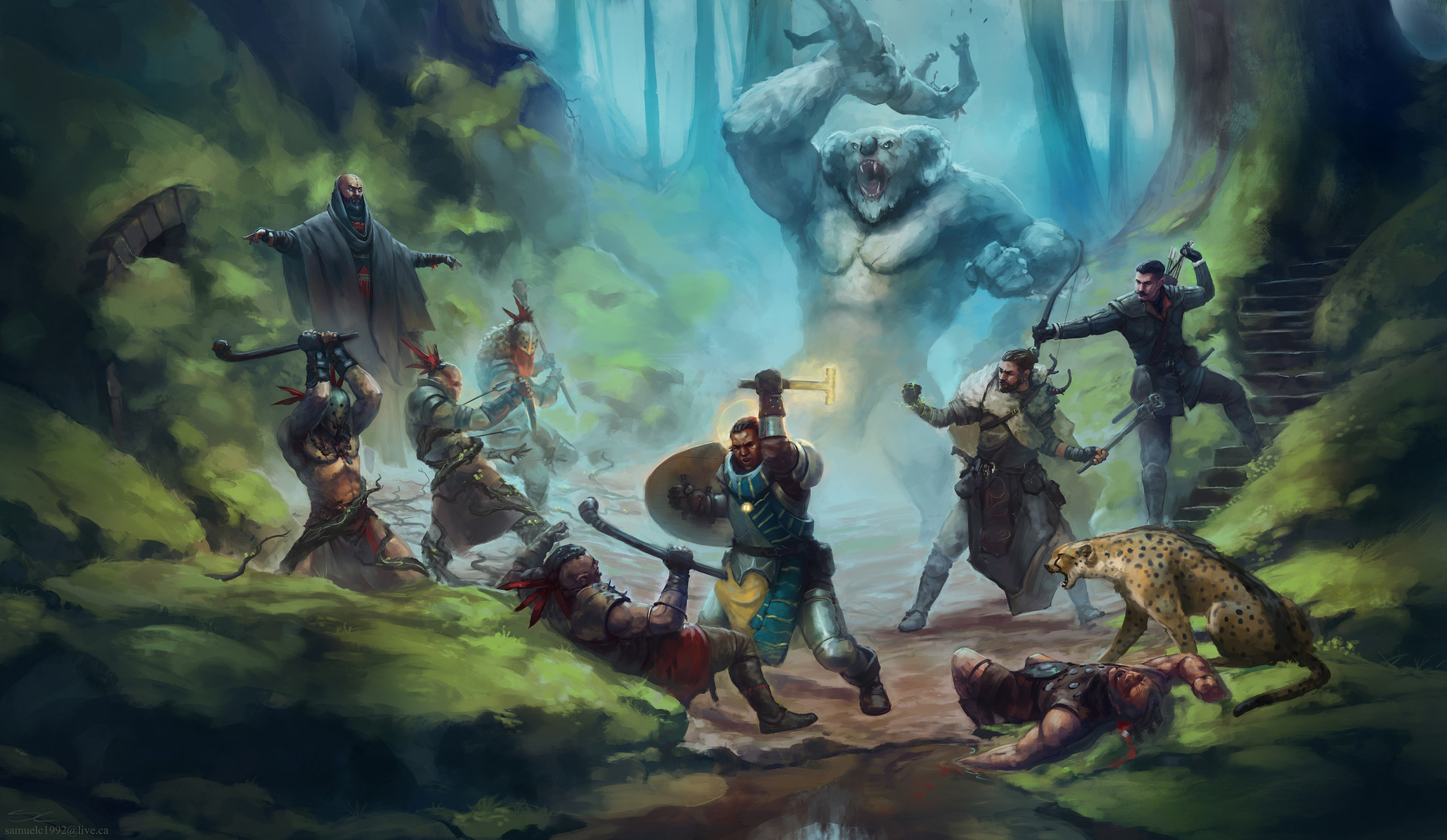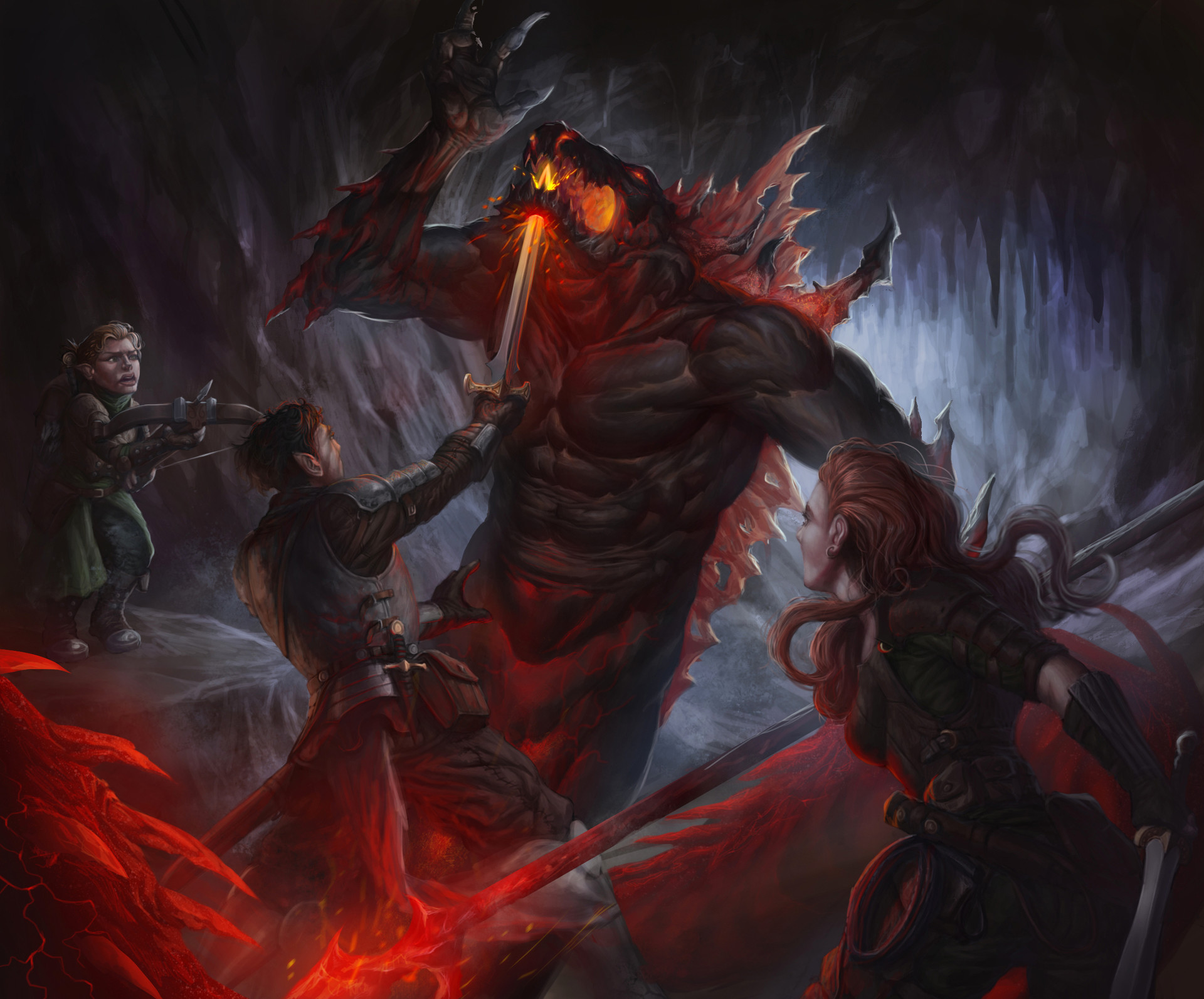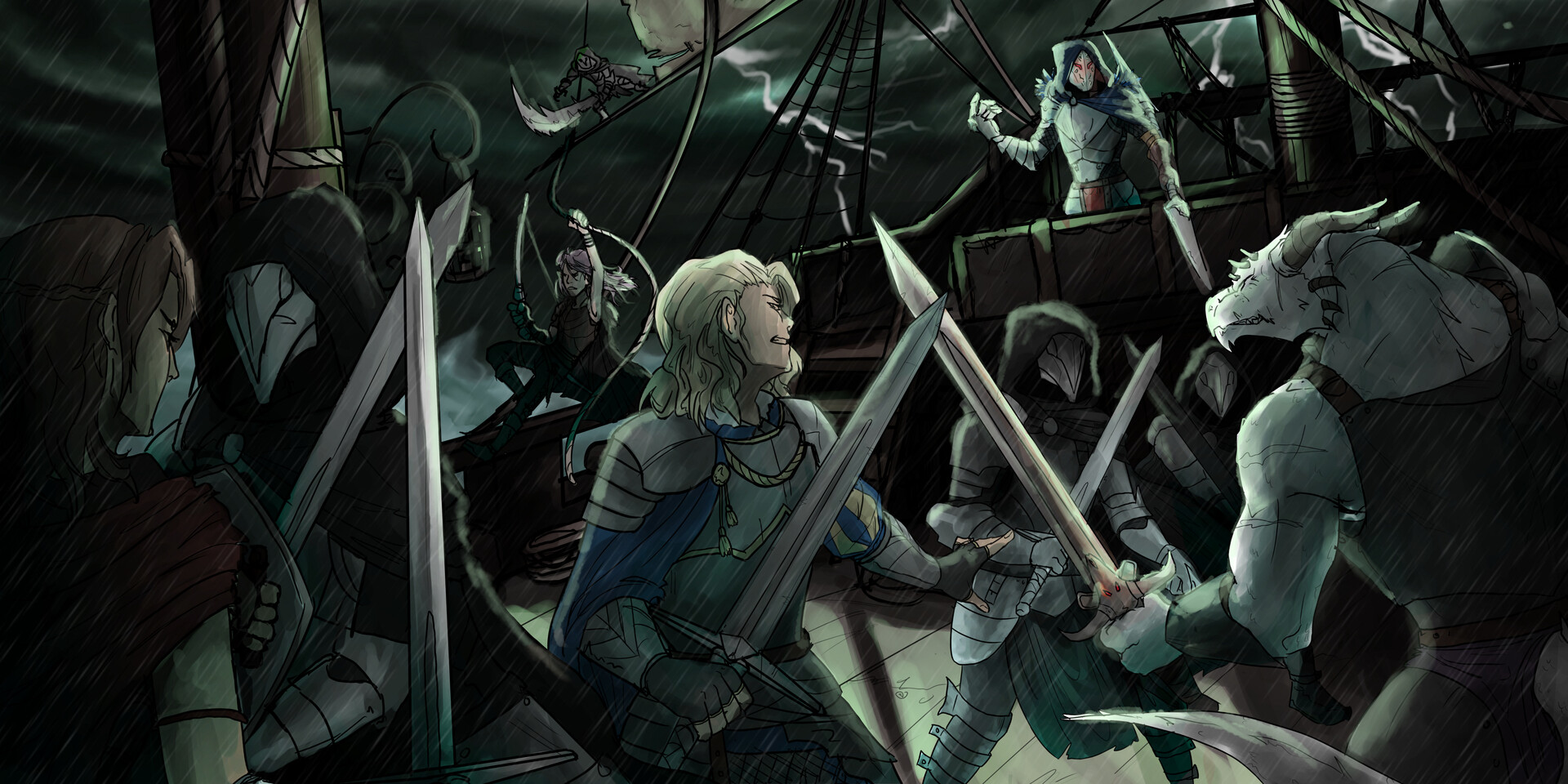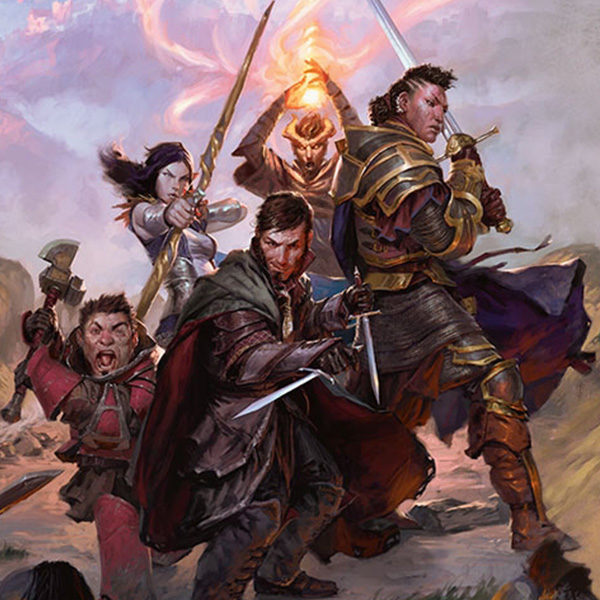Featured Image <Kim van Deun @Sketch_Ferret>
Dungeons & Dragons is a game that can, potentially, last for years and never come to a complete ending. It is also a game that you can play for one hour and feel wonderfully accomplished. Today, we are talking about the shorter style of the game.
If you are still learning how to write an adventure, then a One Shot is the perfect place to put all of your new skills and ideas to practice. Or maybe you want to introduce new players to the game, but they’ve only committed to a single game. Perhaps you are lucky enough to be able to be a GM at an upcoming convention or live event. Whatever the case, there are a lot of things to put into a One Shot, and hopefully this will help.
What is a One Shot?
Every now and then, you want to play just a single session of D&D, instead of multiple sessions, week after week, creating an elaborate story. The One Shot is creating an entire story within a few hours of gameplay. As mentioned above, there are multiple reasons to do a One Shot, and one of the most popular reasons, is if someone wants to try to be a Dungeon Master, but wants to start small (an excellent idea).
The biggest worry you should have about your One Shot, is it taking too long. In most games of D&D, whatever your players don’t solve this week, there’s always next week to continue the story. However, with a One Shot, if it runs too long, people might run out of time, and never complete your story. It’s better to end quickly, than run long.
Inspiration
With a One Shot, players are much more forgiving if the story you are running is stolen from a movie or show. One Shots can even sometimes be MORE fun if it’s a story they are familiar with, because it’s easier to get player buy in, and they can skip a lot of tedious exposition. So find a simple story that sounds like fun, and don’t be self-conscious if it’s too basic or obvious. Just have fun!

Specific Goal
Now that we’ve got the inspiration, make sure to nail down the specific conflict, with a specific goal. If there is a thief problem in a small town, it’s not enough to “find the thief.” Players need to be told exactly what is expected of them. “Find the Thief and kill him,” or “arrest him and bring him to me,” or “let me know where he is, and join my men in ransacking his hideout.” All very different goals, that you don’t want the players to waste time arguing about what they should do.

Keep it Simple, Stupid
As I mentioned above, the biggest threat to people enjoying your One Shot, is it taking too long, and your players never get to finish it. So before we really get into the nitty-gritty of the adventure, keep in mind that you need to keep it simple. I don’t mean to call you stupid, but it makes a nice “KISS” acronym, which I keep written on my DM screen on a sticky note. I know that one of my problems is overcomplicating my adventures. Not only does this lead to me inevitably forgetting something, which then leads to my own disappointment, but it can make this One Shot take too long.
Who is the villain, what is he doing, and how should you stop it? You can ignore complex relational webs, deep backstories, or double and triple agents. Just keep it simple, stupid.

Beginning, Middle, and End
Now that we know what our problem is, and we remember to keep it simple (stupid), now we can actually get to the writing of the adventure. Every story needs a beginning, a middle, and an end.
The beginning is where your players find the problem, and are told how to solve it. This problem needs to be interesting and concise. A thing has been stolen, and needs to be returned. A monster needs to be found, and killed. A person needs to be cleared of their alleged crimes. Whatever the situation, explain it in one sentence, including what the players are being asked to do about it.
The middle is where they face an unexpected challenge to solving the problem. One good pinch and twist is all you need here (no, not like that). A pinch is something that makes the job harder, a twist is something that make the job unique. If a thing has been stolen, it was actually stolen by the original owner, who it was stolen from, and they have the support of another cities guards. If a monster needs to be killed, it can only be found conditionally, like a werewolf at the full moon. Whatever the simple problem is, this is the time to add one complication to it, and one thing that makes it unique. A pinch and twist.
The end is where they finally solve the problem. This needs to be a clear ending, where the players are awarded for their work, and get to feel like heroes. Again, this is the only chance these players are going to have to play in this particular story, so make sure it’s satisfying. They have the gratitude of a king, they get paid handsomely, maybe with a cool magical item, or a mother and child are reunited. Whatever it is, it’s better to go too big than too small.

Action!
D&D games are all about action, about what is happening. In long running D&D games, there are lulls, downtime, areas where there isn’t a ton of stuff happening, but instead rebounding from previous action, or setting up the next bit of action. However, in a One Shot, there is no room for that. You need to be doing something all the time. That’s why, even though this adventure is only a few hours long, you need to break it up into the Beginning, Middle, and End, because if you make sure that there is something actionable three separate times, than you have basically filled the One Shot with action, which makes it more enjoyable, and keeps it moving along.
The best thing to remember, is the Hot Start, or In Media Res. When the adventure begins, make sure you are already doing something. If you waste time looking for the problem, then that’s valuable time that could be spent on action. So have the party start just outside the cave, or moments before an ambush.
My favorite Hot Start that I’ll use one day for a One Shot is:
Our adventure begins in a tavern.
The tavern is on fire.
Because of the dragon.
Roll initiative.
One pitfall to avoid, is the random encounter. In a long running D&D game, you want to capture the fullness and chaos of the world. In a One Shot, it seems like a good way to increase the amount of action. However, again, you only have a few hours to tell a whole story. You a seemingly random encounter that actually plays to the finale would be cool, but avoid completely unrelated fights if possible.

Satisfying, But Loose, Ends
At the end of the session, you should have successfully defeated the monster, recovered the artifact, saved the princess, whatever the goal was. You want the party to feel like heroes. Satisfying ends are very important, and should feel easier given the short amount of buildup you have to complete.
Something I love to do with every One Shot, however, is leave the players with a question. Perhaps among the bones of the monsters previous victims, they find a note about a False King. Maybe the person who kidnapped the Blacksmith’s Daughter claimed he was working for someone else. These are questions that shouldn’t make the party feel like what they did was meaningless. Instead, it should feel like they are starting to discover something much bigger at hand. This lets their imaginations start to turn about what could happen, were the game to continue. If you are introducing the players to the game itself, this curiosity will make them more likely to want to come back to your table. If these are seasoned players, they love to know there’s always another door to open.

Pre-Gens
Now, it can take an entire session just creating characters (specifically a Session 0). So, when you have a One Shot, you need to come up with the characters before hand, PRE-GENerated. The best way, in my opinion, to do this is with the amazing website FastCharacter.com . It will ask you a few questions, and just create a character with the default suggestions, and quickly make a full character sheet, including spells. The sheet is then printable, and you can even choose for grayscale, color, or landscape orientation if you want.
However, before you go through and make your characters, you should consider taking time to really think about the character dynamics of your party. What are the skills you know will be needed in the adventure? What is the hook that you need the players to accept blindly, and why did their characters accept it offscreen? Why are these people working together in the first place?
There are different roles that you need to consider filling. If you have at least three players, then a DPS (high damage), a tank (high AC/HP), and a support (healing or utility) are important. If you have at least four players, then a balanced party has a Strength-melee, a Dexterity-melee, an Arcane-caster, and a Divine-caster.

If you can, ALWAYS have at least one more Pre-Gen prepared than the amount of players you will have. You don’t want anyone to ever think they are “stuck” with a role in the group, because if they don’t have any choice, then they are already off on the wrong foot. Have an extra character. You are allowed to say “X character has to be played by SOMEBODY for the story to work”, but you never want to say “You (individual) have to play X character for the story to work.”
Also, as I wrote this, a player in a previous One Shot that I ran actually messaged me about the adventure, and how it has stuck with him (hi Scott). When I asked what specifically he remembered, he said the focus that I put on the player dynamics, and allowing the players to embellish my Pre-Gens made them. I gave them parameters, specifics that I needed for the premise to work, but asked them a few, important questions about those characters that they could answer quickly, but allowed them to feel like the character was uniquely theirs. If I remember correctly, we referenced a war that had taken place a few years before, and asked what their characters did in/thought of the war. This also gave them permission to reach into this very small backstory of theirs, to call in a favor from a character that they made up on the spot, to solve a problem they had. It was completely unexpected, but not game breaking, and their creativity and accepting of the world I put in front of them was exactly what I wanted, so I gave them exactly what they asked for, and it was brilliant.
When they can’t make the characters themselves, give them something about the character to be uniquely theirs.


Reblogged this on DDOCentral.
LikeLiked by 1 person
Hey I’m actually the DM that commissioned that Strahd fight at the beginning of this article. Pretty interesting to find. Should include artist credits in your posts at minimum.
LikeLiked by 1 person
You know, you’re absolutely right. It’s a habit I need to get into, and I appreciate your reminder.
LikeLike